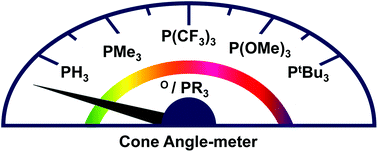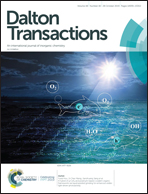Computational assessment on the Tolman cone angles for P-ligands†
Abstract
The Tolman cone angle (θ), the par excellence descriptor of the steric measure of a phosphine, has been recomputed for a set of 119 P-ligands, including simple phosphines and phosphites, as well as bulky biaryl species often employed in catalytic processes. The computed cone angles have been obtained from three different transition metal coordination environments: linear [AuCl(P)] (θL), tetrahedral [Ni(CO)3(P)] (θT) and octahedral [IrCl3(CO)2(P)] (θO), allowing us to observe the steric behavior of the ligand when increasing the steric hindrance around the metal center. The computed cone angles have been extracted from the lowest-energy conformer geometry obtained with a combined MM/DFT methodology. A conformational screening has been done using MM, which allows us to identify the lowest energy structure of each ligand in each coordination environment. These low energy conformers have been subsequently reoptimized at the DFT theory level, from which the cone angle value can be extracted. The computed cone angles have been compared with the original Tolman cone angles, and with other steric parameters such as solid angles (Θ), percent buried volumes (%Vbur), and angular symmetric deformation coordinate (S′4). This new set of values correlates with phosphine ligand dissociation enthalpies in titanocene complexes of the general formula [Ti(2,4-C7H11)2(PR3)], and with reaction barriers in the Suzuki–Miyaura reaction between [Pd-PR3] and bromobenzene, proving that this newly proposed set of cone angles can be employed to establish linear correlations between different experimental and calculated properties for systems in which phosphine ligands play a significant role.



 Please wait while we load your content...
Please wait while we load your content...